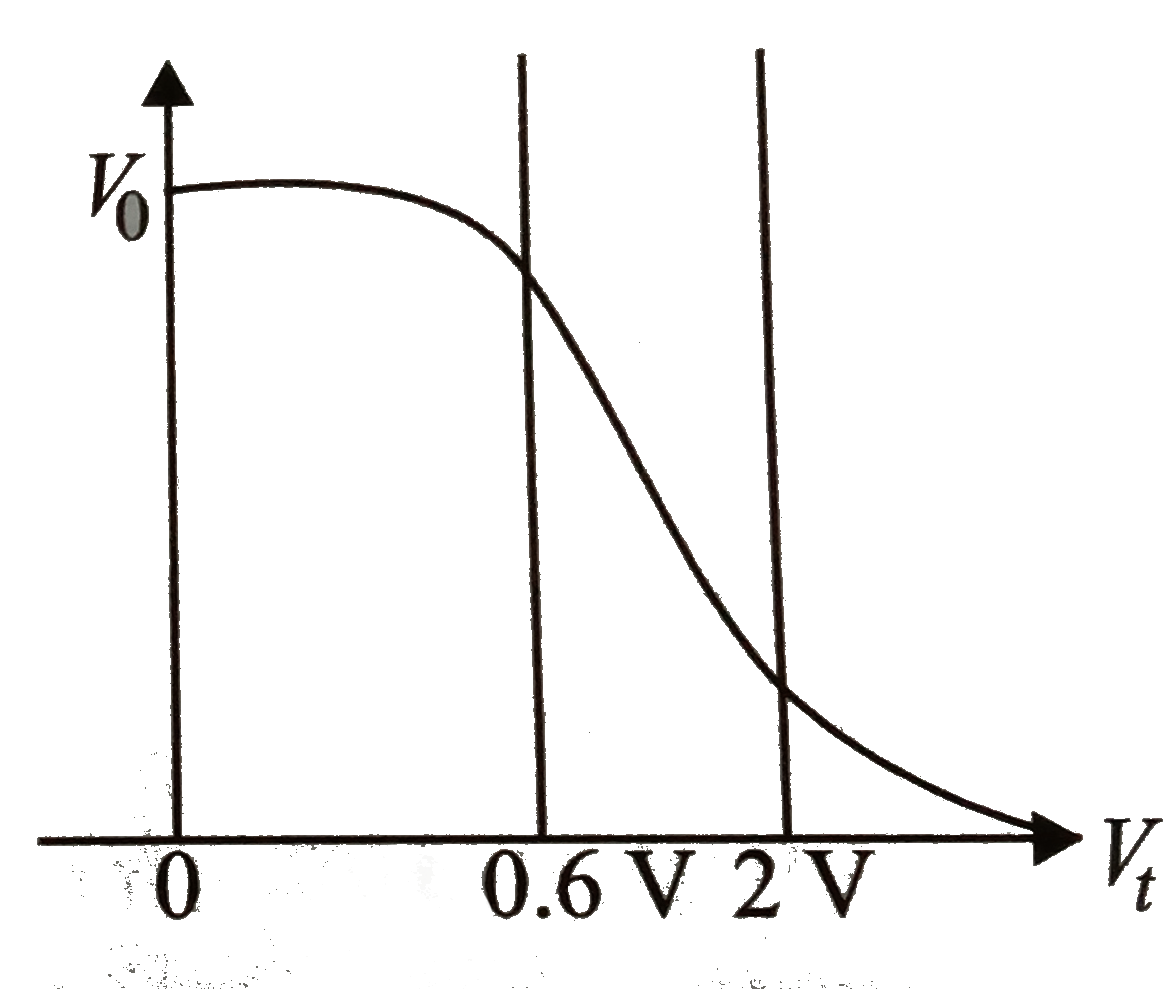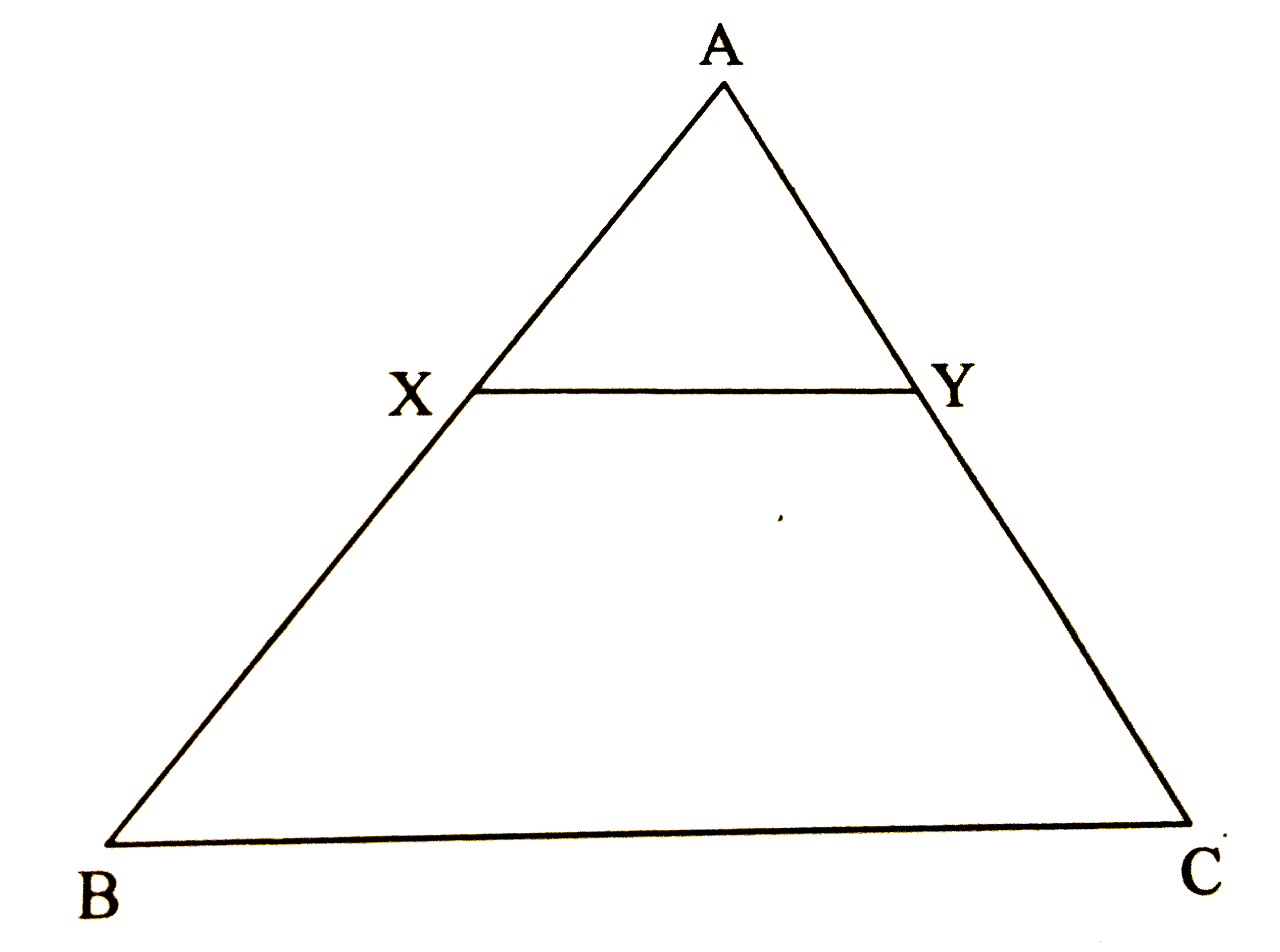The transfer characteristics of a base biased common in the figure. Which of the following statements are true?
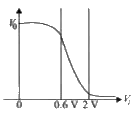
A
At Vi=1V, it can be used as an amplifier.
B
At Vi=0.5V, it can be used as a switch turned off.
C
At Vi=2.5V, it can be used as a switch turned on.
D
All of these
Text Solution
The correct Answer is:D
From the given transfer characteristics of a base biased common emitter transistor,
(i) When Vi=1V, which is in between 0.6 V to 2 V, the transistor circuit is in active state and is used as an amplifier.
(ii) When Vi=0.5V, there is no collector current. The transistor is in cut off state. The transistor circuit can be used as a switch turned off.
(iii) When Vi=2.5V, the collector current becomes maximum and transistor is in saturation state and can be used as switch turned on. So option (a), (b) and (c) are correct.

|
Topper's Solved these Questions
- ELECTRONIC DEVICESBOOK - MTG GUIDECHAPTER - ELECTRONIC DEVICESEXERCISE - CHECK YOUR BEET VITALS
25 Videos
- ELECTRONIC DEVICESBOOK - MTG GUIDECHAPTER - ELECTRONIC DEVICESEXERCISE - AIPMT/NEET (MCQs)
42 Videos
- ELECTRONIC DEVICESBOOK - MTG GUIDECHAPTER - ELECTRONIC DEVICESEXERCISE - AIPMT/NEET (MCQs)
42 Videos
- ELECTROMAGNETIC WAVESBOOK - MTG GUIDECHAPTER - ELECTROMAGNETIC WAVESEXERCISE - AIPMT/NEET(MCQs)
15 Videos
- ELECTROSTATICSBOOK - MTG GUIDECHAPTER - ELECTROSTATICSEXERCISE - AIPMT/NEET (MCQ.s)
34 Videos
Similar Questions
Knowledge Check
Fig.shows that transfer characteristics of a base biased CE transistor. Which of the following statements are true?
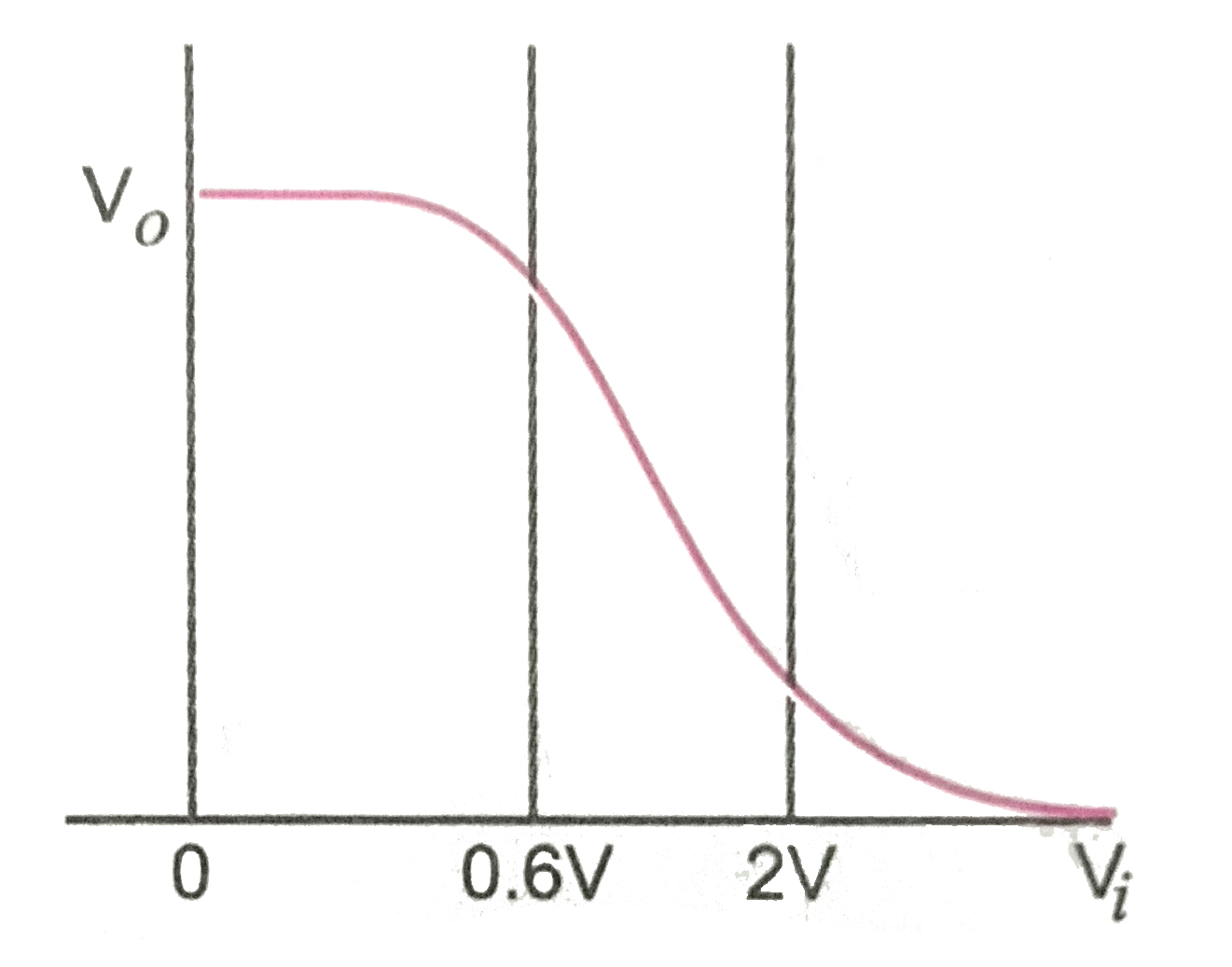 AAt Vi=0.4V, transistor is in active stateBAt Vi=IV, it can be used as an amplifierCAt Vi=0.5V, it can be used as a switch turned offDAt Vi=2.5V, can be used as a switch turned on
AAt Vi=0.4V, transistor is in active stateBAt Vi=IV, it can be used as an amplifierCAt Vi=0.5V, it can be used as a switch turned offDAt Vi=2.5V, can be used as a switch turned onFig.shows that transfer characteristics of a base biased CE transistor. Which of the following statements are true?
 AAt Vi=1V, it can be used as an amplifierBAt Vi=0.5V, it can be used as a switch turned offCAt Vi=2.5V, it can be used as a switch turned onDAll of these
AAt Vi=1V, it can be used as an amplifierBAt Vi=0.5V, it can be used as a switch turned offCAt Vi=2.5V, it can be used as a switch turned onDAll of theseFigure shows the transfer characteristics of a base biased CE transistor. Which of the following statements are true ?

(A) At V1=0.14V transistors is in active state
(B) At V1=1V it can be used as an amplifier
(C) At V1=0.5V, it can be used as a switch turned off
(D) At V1=2.5V, it can be used as switch turned onAA,B,CBB,C,DCA,C,DDA,B,D
For the circuit shown in figure, which of the following statements is true ?
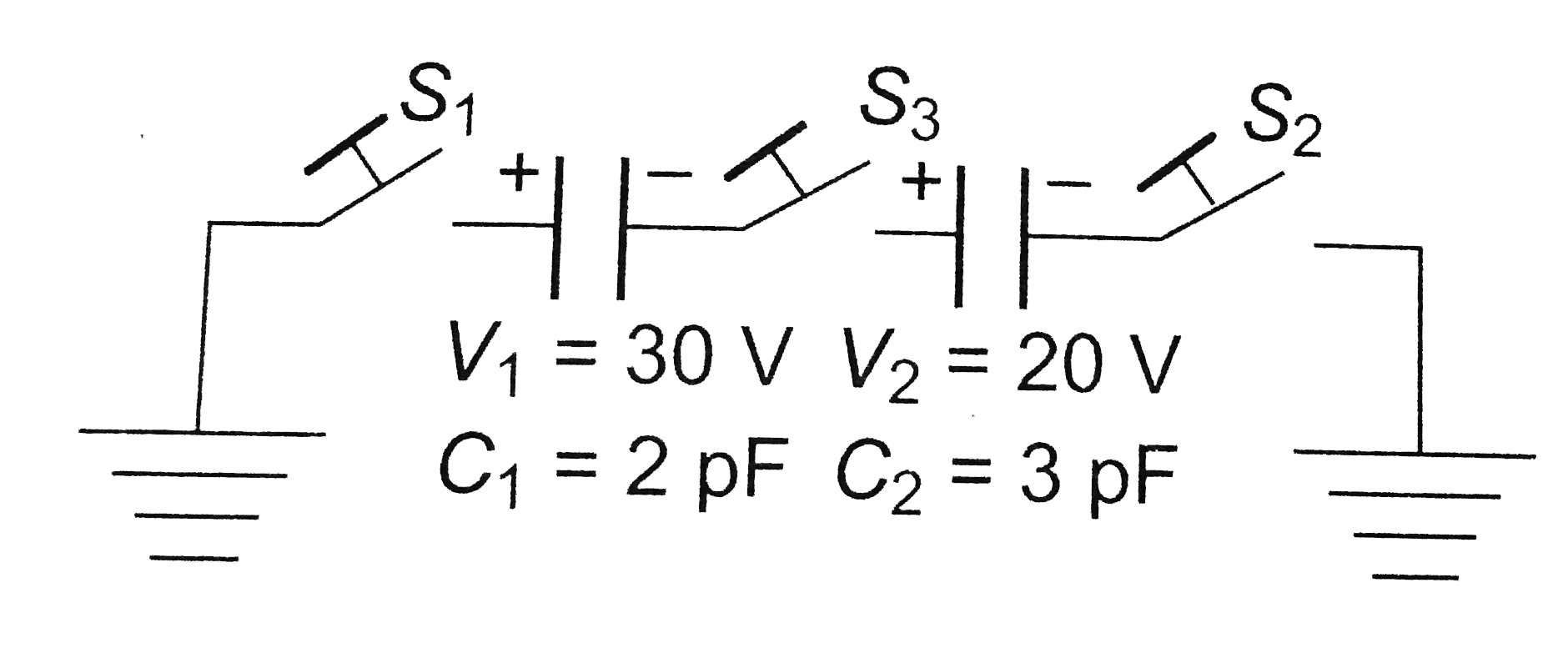
View SolutionFor the circuit in figure, which of the following statements is true ?

View SolutionFor the circuit in figure, which of the following statements is true ?

View SolutionFor the circuit shown in figure, which of the following statements is true ?

View SolutionTwo organisms that are true-breeding for a certain genetic characteristic are mated and their offsprings analyzed. Which of the following statements about this situation is true?
View Solution

